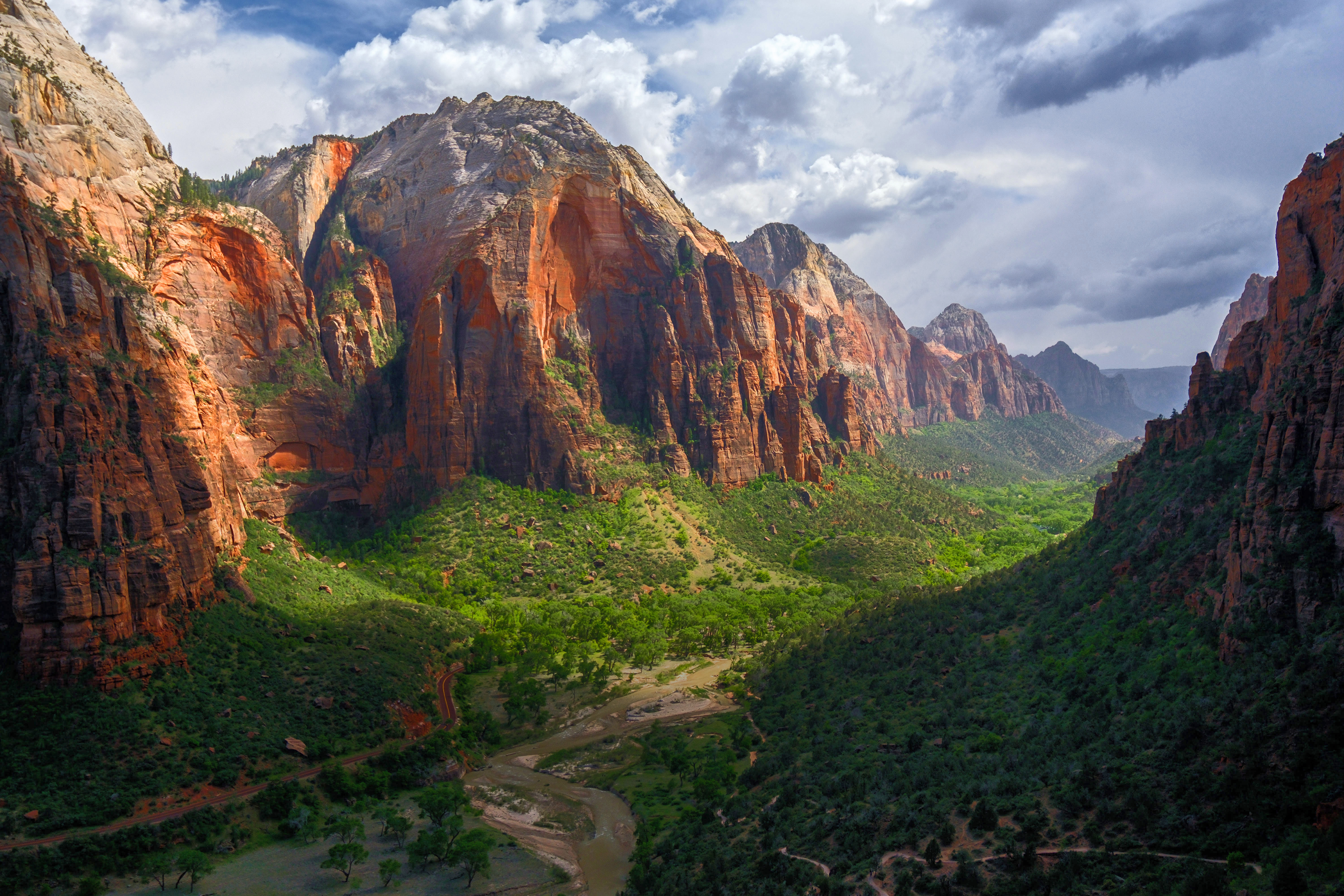Pa’Rus to Sinawava
-Planning a Multi-Use Trail-
Constructed in 1932, and now listed on the National Register of Historic Places, the Floor of the Valley Road, also known as the Zion Canyon Scenic Drive, provides direct access for millions of visitors each year, deep into the heart of Zion National Park.
The distinctive red cinder road runs alongside the waters of the Virgin River where guests can experience some of the most diverse flora, fauna, and geology found anywhere in the world. Along the awe-inspiring drive, millions of park-goers discover lush ferns and giant cottonwoods growing near prickly pear cacti and banana yucca, backed by swirling red and white Navajo sandstone cliffs. The canyon is home to hundreds of animals, some of which, like the Virgin River Spinedace, are only found here in the Zion region.
The roughly 7-mile roadway is traditionally accessed by park shuttle during peak visitation and by private cars during the park’s winter months. Cyclists and hikers are also allowed but must be careful as they compete with a steady flow of large double-trailer shuttle buses and cars on an extremely tight and twisty road. Amidst the growing trend of biking and walking up the canyon, it’s time to re-examine the need for a multi-use trail that allows hikers and cyclists direct access without having to compete on the busy road. Identified as a potential need in 2008, limited budget and other project priorities mean there is currently no funding available to jumpstart the planning and design process of what is expected to be a five-year, multi-phase, legacy project.
With the total project slated to cost approximately $10 Million, this first round of funding begins a two-year process of planning and designing a trail that would eventually become an extension of the Pa’rus Trail (the park’s existing multi-use trail). The 1.7-mile paved trail, beginning near the
Zion Canyon Visitor Center and ending at Canyon Junction, would extend approximately 8 miles up-canyon in a meandering scenic route to reach the Temple of Sinawava and the popular Narrow’s hike. This highly technical engineering project would include compliance studies to identify natural and cultural resource preservation requirements before project construction begins.
The new trail would mean more than an opportunity to provide better and safer access as visitors trek along the valley floor; it would also be a chance to design and construct new utility and sewer lines running underground in the same construction route. This would provide modern relief to Zion’s strained and aging septic and wastewater systems, furthering the park’s commitment to environmental protection and public health.
“Anytime we find a project that allows us to solve multiple problems at once, that is a great success. We save resources and effort during design and construction; we limit our impact on the land and the park’s sensitive habitat; and we reduce life-cycle maintenance costs to protect park infrastructure well into the future.” –Dr. Bry Carter, Chief of Facilities Management, Zion National Park
The first two years of this design process will focus on the infrastructure and planning needed to engineer and construct this legacy initiative. While some areas of the valley provide easy access with obvious paths forward, other more daunting locations will require new bridges, walls, and platforms.
Your contribution to this project ensures multi-modal access to Court of the Patriarchs, Emerald Pools, Angels Landing, the Narrows, and all the essential trails and features that speak to the essence of our shared mission within these cherished natural resources.

